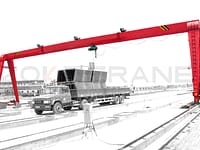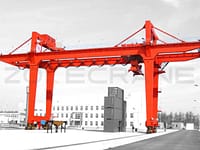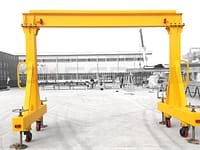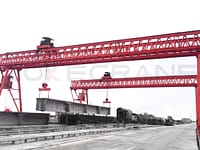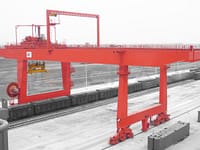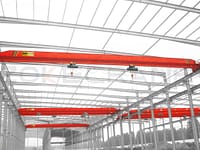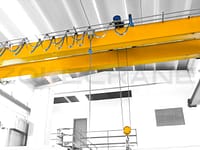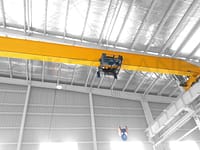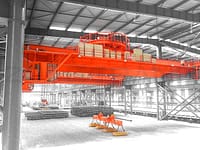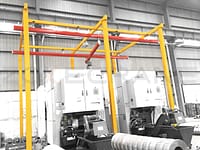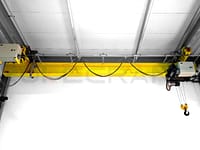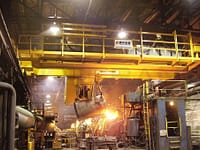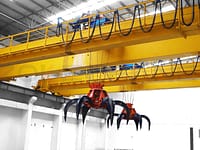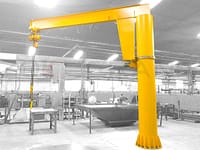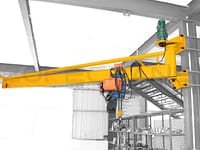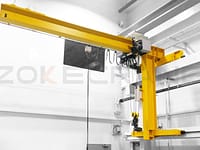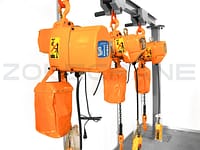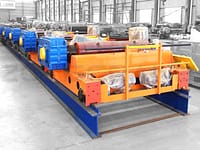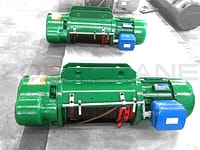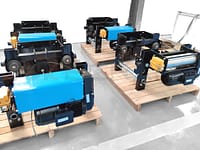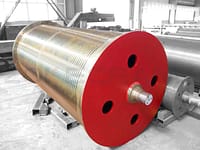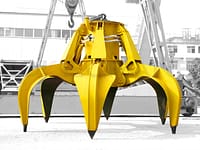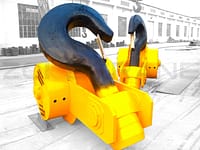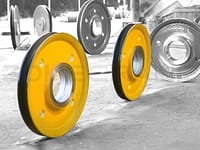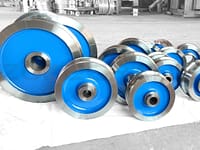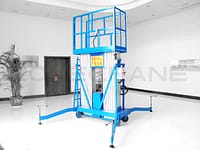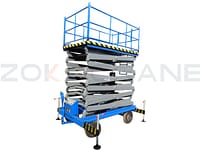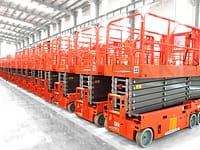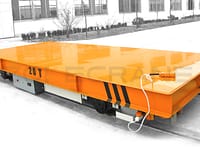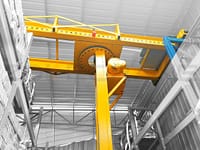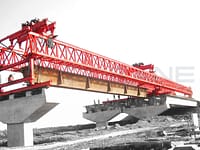According to the previous crane operation data, if the span of the track does not match the span of the overhead crane, there will be rolling phenomenon during the operation of the equipment, wear and tear of the wheels and rails, and even cause frequent vibration of the plant, resulting in great noise. If the elevation of the two tracks is not consistent, it may also cause the phenomenon that the crane can not walk after lifting objects.

Installation standards and deviation requirements of bridge crane trolley track
The standard length of the rail of the big car track is generally 9m, 9.5m, 10m, 10.5m, 11m, 11.5m, 12m, 12.5m, and the installation should comply with the following standards:
- The relative elevation deviation of two tracks <10mm, measured by level meter
- Track longitudinal inclination 1/1500
- Track joints height deviation <1mm, measured by steel ruler and plug ruler
- Misalignment of left and right rail joints, deviation <1mm, measured by steel ruler and tape measure.
- Parallel two rail joints wrong, open ≥ 500mm, measured with a steel tape measure
- Track span deviation S ≤ 10m, △ S = ± 3mm; S> 10m, △ S = ± [3 + 0.25 (S-10)] mm, maximum ≤ 15mm, measurement of a uniform height, the outer side of one side of the guideway, and the distance from the outer side of the other side of the guideway, measurement of the average of 3 times
- Rail joint clearance is usually 1-2mm; temperature difference of 20 ℃ or winter installation of 4-6mm, with a plug ruler to measure the direct head or 45 ° oblique joints
- Twisting degree≤1.5mm
- Track bending deviation ≤ 3mm
- The actual centerline of the track and the actual centerline of the beam deviation ≤ 10mm, and less than 50% of the thickness of the beam web, measured with a steel tape measure
- Amount of wear and tear on the top and side of the rail (unilateral) ≤3mm
- When the rail produces small transverse cracks, it will be connected with fishtail plate, and the connecting bolts of fishtail plate are generally 4-6, and the longitudinal cracks and oblique cracks will be scrapped.
The installation of the trolley track is related to the safe operation of the traveling car, must strictly implement the standard.
Crane trolley track installation deviation standards
Crane trolley track generally refers to the double girder overhead crane or double girder gantry crane on the installation standards, part of the installation standards are the same as the big car, the total standards are as follows:
- The relative elevation of the two tracks: deviation <10mm, measured with a level meter
- Longitudinal inclination of the rail: 1/1500
- Track joints height deviation: ≤1mm, measured by steel ruler and plug ruler
- Misalignment of left and right rail joints: deviation ≤1mm, measured by steel ruler and tape measure.
- Parallel two track joints misalignment: ≥ 500mm, measured by steel tape measure
- Track span deviation: less than 50t of the positive rail box beam and half partial rail box beam gauge limit deviation: end of ± 2mm, span, when S ≤ 19.5m, for +1 ~ +5mm, when S> 19.5m, for +1 ~ +7mm. other beams do not exceed ± 3mm. measured with a steel tape measure.
- Track joint clearance: e ≤ 2mm, measured with a steel ruler and tape measure, direct head or 45 ° oblique joints
- Twisting degree≤1.5mm
- Track bending deviation: ≤ 3mm
- Rail top and side wear (single side): ≤ 3mm
- End track length: ≥1.5m measured by steel tape measure, with block at the end.
- The track produces small transverse cracks, with fishtail plate connection, fishtail plate connection bolts generally 4-6; longitudinal cracks and oblique cracks scrapped.
- Trolley track each group of pads not more than 2 pieces, length not less than 100mm, width than the bottom of the rail 10-20mm wide, 2 groups of pads spacing not less than 200mm, pads and the bottom of the track actual contact area should not be less than the nominal contact area of 60%, the local gap is not more than 1mm.

The straightness of the track can be checked by pulling the steel wire, i.e. pulling a 0.5mm steel wire on both ends of the track, and then measuring point by point by using the method of hanging the wire hammer at intervals of about 2m.
Track elevation, can be measured with a level meter.
The span of the rail with a steel tape measure to check the ruler end with a cardboard fastening, the other end of a spring scale tethered to its tension for the span of 10-19.5m crane tension to take 98N, 22-31.5m crane tension to take 147N, measured at intervals of 5m, measured in the middle of the rail before the measurement to play a punching eye, the measurement of the points of the spring scale tension is the same.
To achieve the track span and crane span in line, in the track installation, to send a person with a steel disk ruler and spring scale to accurately measure the distance between the two rails, can not use a tape measure. In order to achieve the same installation height of the two rails, the surface elevation of the concrete crane beam or steel beam should be determined by a level first. If the error is too large, the civil construction unit should be asked to correct it, and if the error is small, it can be adjusted with a pad when installing the track.
